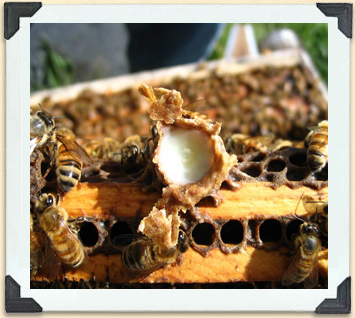The Keeper

A cell full of royal jelly.
© University of Manitoba
Royal Jelly
Royal jelly is a very nutritious substance worker bees produce through their glands and feed to the larvae and queen. In traditional Chinese culture it's believed that eating royal jelly increases energy and prolongs youthfulness.
To collect royal jelly, the beekeeper moves 18- to 24-hour-old worker larvae into specialized queen cups. The beekeeper then moves the larvae into the brood chamber of a "nurse colony," and the worker bees immediately feed them royal jelly. Three days later, the beekeeper harvests the royal jelly by suctioning it into collection tubes.




